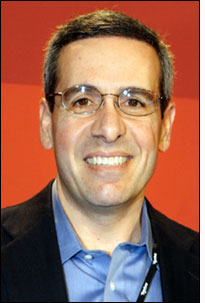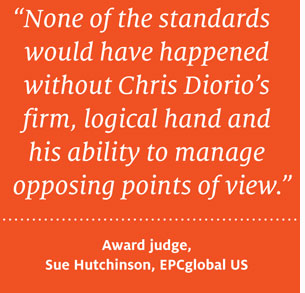Chris Diorio is a well-respected professor of computer science and engineering at the University of Washington. He also is a co-founder of Impinj, one of the most successful startups in the radio frequency identification industry (in April, the company announced plans to go public). But he’s being honored for a third aspect of his dynamic career—standards creator.
Diorio served as co-chair of the MIT Auto-ID Center’s Hardware Action Group from 2002 to 2003. He took on the same role for EPCglobal when it licensed the Electronic Product Code intellectual property from MIT, and also served as project editor on the writing of the specification for the EPCglobal second-generation air-interface protocol and the ISO 18000-6C air-interface protocol, which was ratified by the International Organization for Standardization as a global standard.
|
|
“It was a heady time,” Diorio recalls. “There was a lot of excitement about RFID, and there was a lot at stake. A new UHF standard would marginalize some existing standards and products, but we knew we needed a worldwide standard.”
Creating standards is often described as sausage making—something you don’t necessarily want to witness. Competing interests and a lot of jockeying for position intensified the RFID standards work, but Diorio brought a calmness, seriousness and intellectual rigor that enabled some 40 companies to agree on a single specification.
Diorio was perhaps uniquely suited to the task. He was an expert in the intricacies of silicon. He had founded Impinj in 2000 with Carver Mead, his professor at California Institute of Technology, where Diorio earned his Ph.D. in 1997. Impinj originally focused on self-tuning silicon, a technique he and Mead had developed whereby a built-in tuning mechanism in the chip allowed a tunable transistor to self-correct for a range of variables, such as deviations in the manufacturing process and changes in temperature. Diorio saw the potential to apply the technique to chips for the emerging RFID industry, and joined the Auto-ID Center at MIT in 2002.
Impinj bet heavily on the Gen 2 standard. It became the first company to produce chips for ultrahigh-frequency RFID tags based on the new standard, in 2005. That gave the company an early lead in the market, which Impinj has built upon. The company claims to be the largest provider of UHF Gen 2 chips.
“It was not an easy process,” Diorio says of getting the RFID community to come together on the original Gen 2 standard. “There were times when some people thought we might not get it done, but I always felt we would, because we knew that without agreement on a global UHF standard, there probably would not be a viable RFID industry.”
Thanks in no small part to Diorio, there is.
To learn about this year’s other winners, see 2011 RFID Journal Awards: Excellence in RFID.



